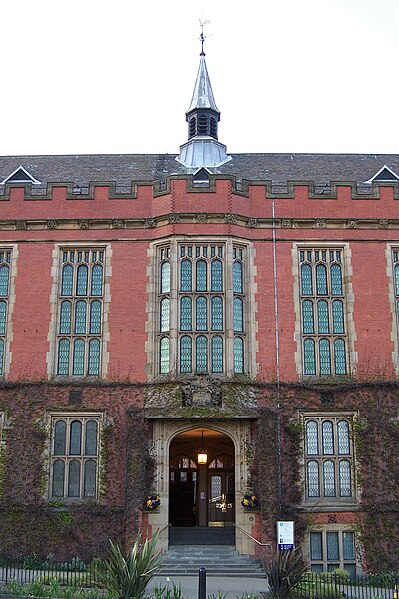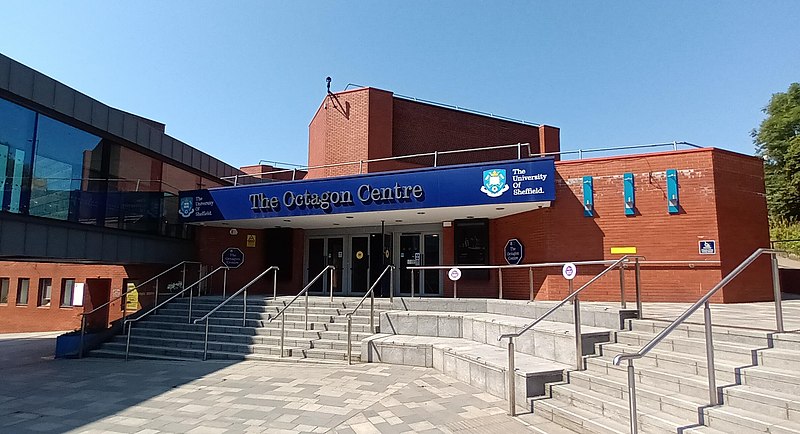
Thammasat University students interested in urban studies, city planning, architecture, sociology, futurology, ethnology, and related subjects may find it useful to participate in a free 21 May Zoom webinar on Living in a Future City.
The event, on Tuesday, 21 May 2024 at 8pm Bangkok time, is organized by the University of Sheffield, the United Kingdom.
The TU Library collection includes many books about different aspects of future urban life.
Students are invited to register at this link:
https://www.eventbrite.co.uk/e/living-in-a-future-city-tickets-853814491127
The event webpage explains:
What does “sustainable urban living” actually look like? We will explore what makes a city sustainable, from the perspectives of its residents, administrators and surroundings. How can safety, environmental protection, energy security and climate change adaptation be designed into new and existing urban areas? What are the challenges that come with sustainable urban adaptation, how can we overcome these, and what are consequences if we continue to ignore the importance of creating sustainable cities?
Among the speakers will be Dr. Ryan Bellinson, a Senior Research Fellow in Cities, Climate and Innovation at the UCL Institute for Innovation and Public Purpose (IIPP) at University College London and Dr. Tanzil Shafiq of the Department of Architecture and Urban Institute, University of Sheffield.

A 2019 coauthored article by Dr. Bellinson for the Journal of Environmental Policy & Planning addressed the subject of Learning pathways and the governance of innovations in urban climate change resilience and adaptation.
Here is the article’s abstract:
The proliferation of transnational municipal networks (TMNs) has precipitated
different innovative models of urban climate change governance. To date, there have been few reflexive inquiries into how urban governance institutions and processes themselves are learning to innovate as a result of participating in TMNs. In response, this paper draws on theories of institutional learning and urban governance to offer a conceptual distinction between innovations in governance and the governance of innovations in the context of climate resilience and adaptation. We apply the latter, more procedural orientation to evaluate the case studies of Rotterdam and Berkeley, where we highlight the actors, networks, and resources required to motivate and sustain actions against concurrent sectoral interests. Experiences from the two cities show that learning pathways are constructed and reified through processes of communication and negotiation, which result in the grounding of TMN resources. A focus on unpacking the variations in learning and implementation within cities can offer insights into the opportunities for enabling more meaningful forms of procedural innovation. We should therefore more critically engage the innate political economic nature of urban governance, which has direct implications for how climate resilience and adaptation innovations are ultimately sustained in local contexts.
From the Introduction:
Cities around the globe are organizing through transnational municipal networks (TMNs) to build capacity, share knowledge, and tackle their climate challenges collectively. TMNs have become notable political actors in advancing innovative planning strategies such as encouraging cross-sectoral learning, translating science, harnessing new funding mechanisms, and emphasizing projects that promote co-benefits. However, […] there continues to be a lack of research on understanding how the learning resources offered by TMNs actually contribute to procedural change within member cities. Furthermore, TMNs have been critiqued for being networks of larger elite cities, for emphasizing the positive actions taken by these elite members, and for promoting top-down, technocratic planning models.
Current scholarship on TMNs examines their roles within the broad field of global environmental governance, although primarily in the context of climate change mitigation and, to a lesser degree, climate adaptation (see Andonova et al. 2013; Lee 2013). In this paper, we apply these insights to emerging climate resilience actions and highlight the perspectives and outcomes of two cities participating in 100 Resilient Cities (100RC), a TMN supported by The Rockefeller Foundation. We offer a conceptual distinction between two forms of governance innovation. The first is innovations in governance, which refers to the development of new ideas, innovative interventions, and novel decision-making arrangements, and is the form of outcome-oriented innovation most prioritized by TMNs. Second, we explore the governance of innovations, which speaks to the everyday procedural politics associated with learning and adopting new ideas while facilitating qualitative changes in places. This conceptual distinction is important because although governance innovations are disseminated across the globe relatively uniformly, these new ideas are in fact interpreted and embedded differently across variegated political, social, and economic contexts.
To critically unpack the dynamics associated with the governance of innovations, we ask: How are cities building new learning arrangements to internalize emerging innovations in climate resilience as advocated by TMNs?
This paper draws on theories of urban governance, urban innovation, and institutional learning (both endogenous and exogenous) in the context of climate change. We then apply these to two case studies and illustrate the interplay between innovations in governance and the governance of innovation. We conclude that although TMNs are notable in facilitating the former, the latter requires more sustained forms of internal buy-in, leadership, and awareness to enable meaningful procedural learning and innovation. We should therefore additionally examine the innate political economic nature of urban governance, which has direct implications for how climate resilience and adaptation innovations are debated, designed, and ultimately (meta-) learned and implemented in urban contexts.

From the paper’s Conclusion:
[…] We have shown that cities are indeed constructing more integrated decision-making pathways across municipal sectors to facilitate action, learning, and innovation through a more negotiated political process.
At times, the process of governing innovations draws on historical experiences of local stakeholders and community groups, such as in the case Berkeley.
In other times, this process relies on expert planners and policymakers who source climate knowledge from local informants, as in the case of Rotterdam. From both examples, we see that cities are constantly learning and innovating in order to address emerging climate resilience challenges.
Through TMNs like 100RC, cities are building more networked arrangements through which climate resilience policy innovations become implemented and learned, but this occurs in particular ways. The experiences from Berkeley and Rotterdam show that local governments have to wade through muddied political landscapes with diverse stakeholders and distribute their limited resources, all while constantly striving to bridge multiple spheres of authority. Our results therefore underline a further need to critically evaluate the politics associated with governing learning and innovation pathways, addressing also issues of political power and conflicting political economic interests embedded within the design and execution of climate resilience and adaptation actions in cities.
We therefore need to be wary of the particular methods and techniques used by TMNs to promote innovations in member cities. By offering a conceptual distinction between innovations in governance and the governance of innovations, we illustrated how TMNs can be critiqued for their top-down governing style and lack of meta-learning, based on the pursuit of innovation outcomes through frameworks with limited flexibility and responsiveness to local political contestations. In the case of 100RC, the creation of the CRO position forms a highly delicate political intervention, raising questions of legitimacy, accountability, and institutional embedding.
Furthermore, the tools and frameworks provided imply strong direction, potentially constraining the room for more place-based innovation. We should harness more open approaches and experimentation to enable deeper learning outcomes, allowing for iteration, reflexivity, and the building of sustained policy coalitions.

(All images courtesy of Wikimedia Commons)
